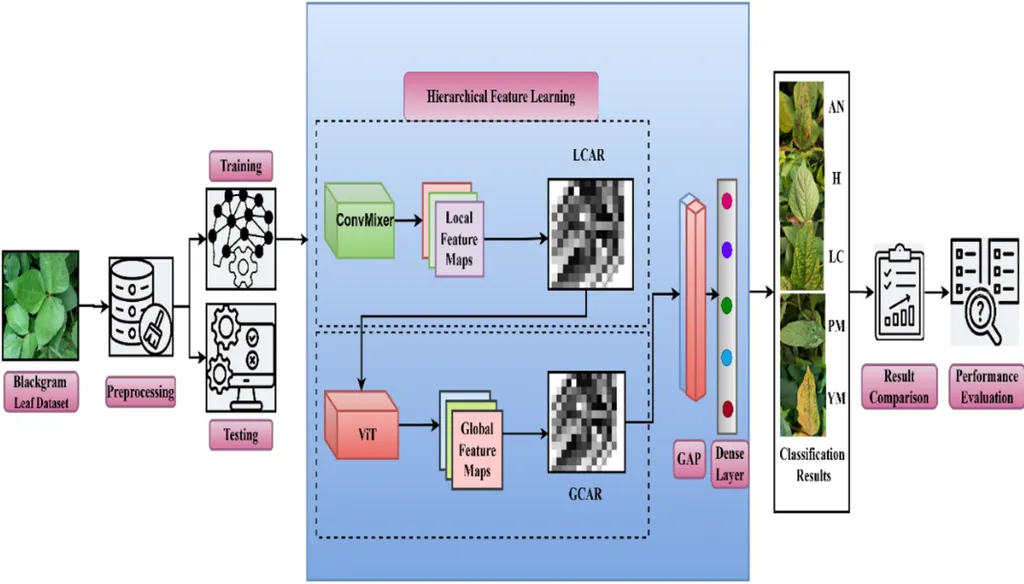In the heart of India’s agricultural landscape, where black gram, or urad bean, is a staple crop, a new technological breakthrough is set to revolutionize disease detection and management. Researchers have developed a lightweight, yet powerful, deep learning model named ConViTSE, designed specifically to classify black gram leaf diseases with remarkable accuracy. This innovation, published in *Scientific Reports*, promises to enhance precision agriculture and bolster farmers’ livelihoods.
Black gram, a crop of significant economic value, is often plagued by various leaf diseases that lead to substantial yield losses. Traditional methods of disease identification are time-consuming and prone to human error. Enter ConViTSE, a hybrid deep learning architecture that combines ConvMixer, Vision Transformer (ViT), and Squeeze and Excitation (SE) blocks. This unique integration allows the model to extract and refine both local and global features, ensuring a comprehensive analysis of leaf diseases.
The model’s innovative Local Channel Attention Refinement (LCAR) and Global Channel Attention Refinement (GCAR) modules enhance feature representation at different hierarchical levels, making it exceptionally adept at identifying diseases. “ConViTSE achieves a leading classification accuracy of 99.30% on the black gram dataset,” said lead author M. Anu Kiruthika from the Department of Computer Science and Engineering at Anna University. “This level of precision is a game-changer for farmers, enabling early detection and timely intervention to mitigate crop losses.”
What sets ConViTSE apart is its computational efficiency and robust cross-domain generalization. The model demonstrates impressive accuracy rates for other crops as well, achieving 98.75% for rice, 98.20% for maize, and 95% for wheat. This versatility makes it a valuable tool for precision agriculture, adaptable to diverse agricultural environments.
The commercial impact of this research is profound. By automating disease detection, ConViTSE reduces the need for manual inspection, saving time and labor costs. Early and accurate disease diagnosis allows for targeted application of pesticides, reducing overall chemical usage and promoting sustainable farming practices. “This technology has the potential to transform the agricultural sector by making disease management more efficient and effective,” Kiruthika added.
The implications of this research extend beyond immediate applications. The success of ConViTSE paves the way for further advancements in agricultural technology. Future developments could see the integration of such models into drones or mobile applications, providing real-time disease monitoring and management solutions. Additionally, the model’s lightweight nature makes it suitable for deployment in resource-constrained environments, ensuring accessibility for small-scale farmers.
As the agricultural sector continues to embrace technological innovations, ConViTSE stands as a testament to the power of artificial intelligence in enhancing crop productivity and sustainability. This research not only addresses the pressing need for efficient disease detection in black gram but also sets a precedent for similar applications across various crops. The future of precision agriculture looks promising, with ConViTSE leading the charge in revolutionizing disease management practices.

